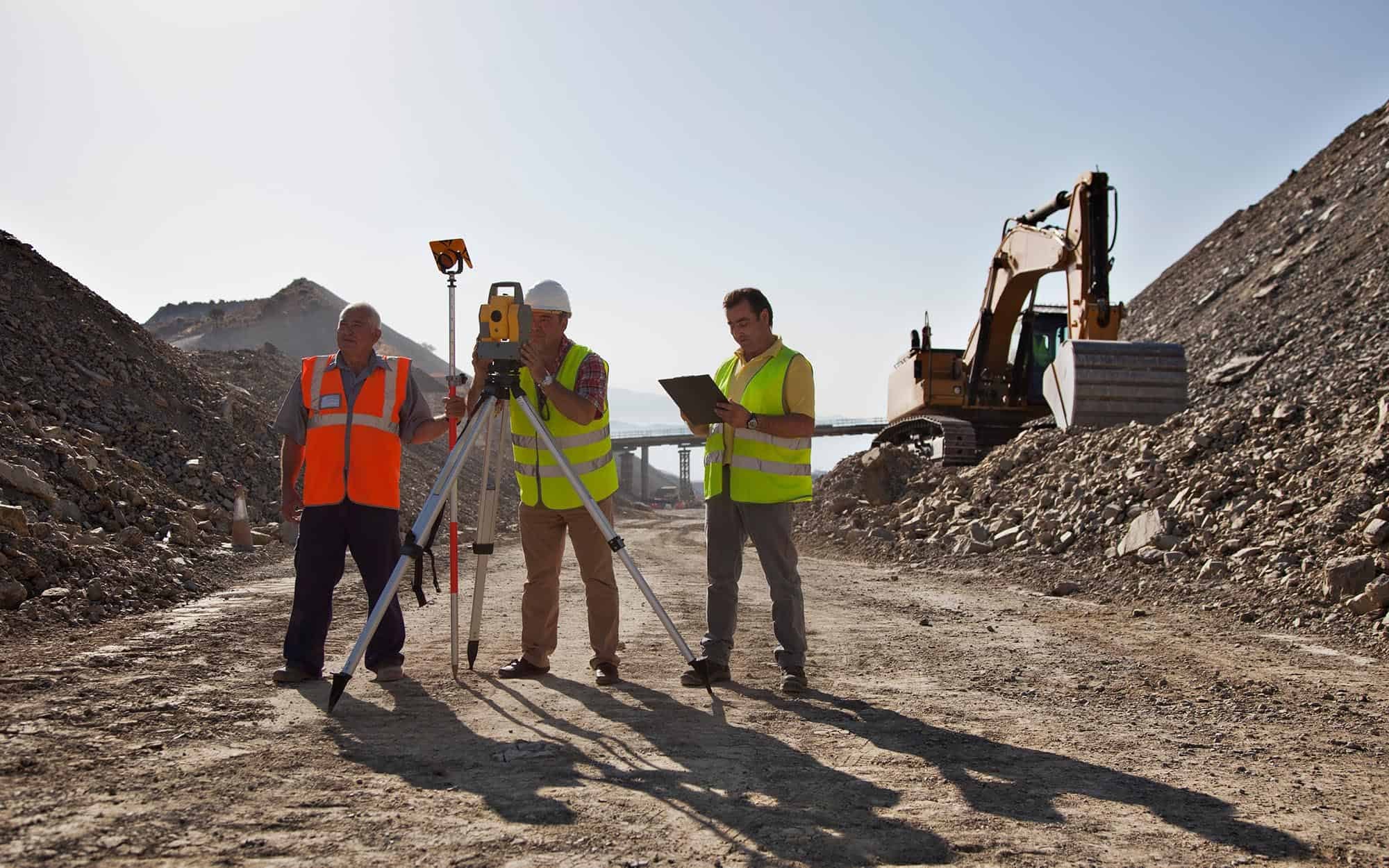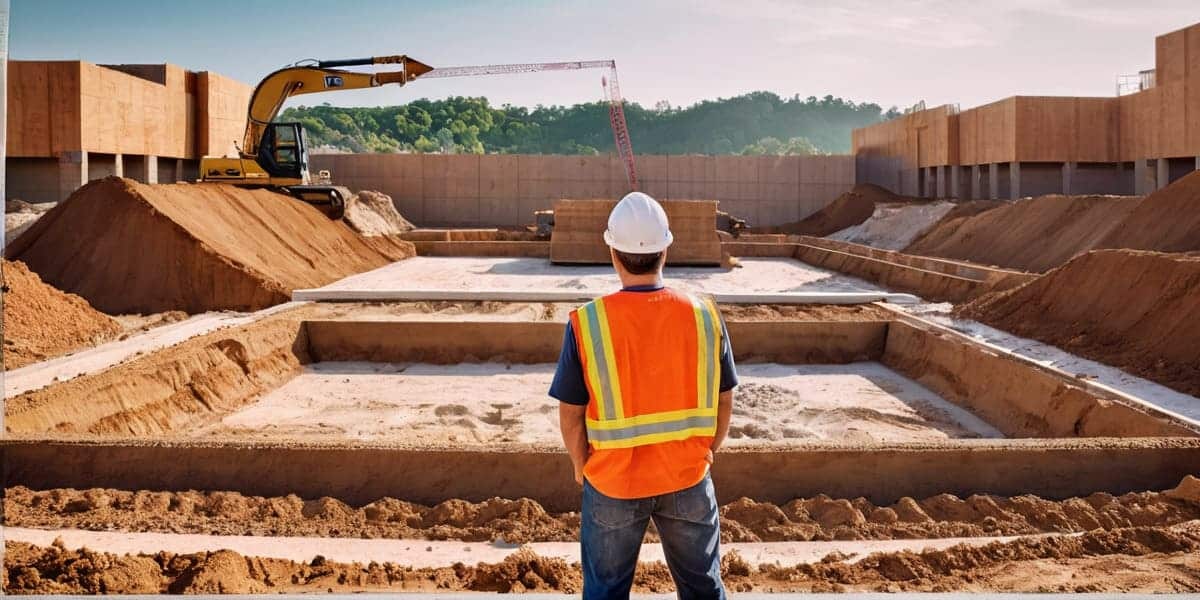Land preparation is a crucial step in the construction process, setting the stage for a successful building project. Before construction begins, proper site preparation ensures that the land is suitable for the planned structure, preventing potential issues related to soil stability, water runoff, and environmental impact.
Key elements of site preparation include land clearing, soil testing, and site evaluation, which collectively form the foundation for a durable and safe construction site. By investing time and resources in thorough site preparation, construction teams can significantly reduce the risks of delays, unexpected costs, and structural failures, ensuring the smooth progression of the construction project and the long-term stability of the final structure.

Understanding the Basics of Construction Site Preparation
Construction site preparation is the process of readying a piece of land for building activities, which involves several critical steps. These include clearing the land of vegetation, large rocks, and existing structures, as well as conducting soil testing to determine the soil type and its bearing capacity. Proper site preparation is essential for establishing a solid foundation, ensuring that the land can support the weight and demands of the new structure.
Additionally, the process helps in addressing potential environmental concerns, such as preventing soil erosion and managing stormwater runoff, which are crucial for protecting surrounding properties and ensuring regulatory compliance.
Why Land Preparation is a Critical Step Before Construction Begins?
Land preparation is the bedrock of any successful construction project, affecting every subsequent phase of the construction process. A properly prepared site ensures that the land is stable and capable of supporting the planned structure, which is vital for maintaining the structural integrity of the building.
Without adequate land preparation, issues like soil erosion, improper drainage, and unstable foundations can arise, leading to significant setbacks in the construction process. Therefore, investing in thorough site preparation not only reduces risks but also ensures that the construction activities can proceed smoothly, resulting in a high-quality, durable final product.

The Role of Site Evaluation and Surveying in Site Preparation
Site evaluation and surveying are essential activities in the site preparation process. These steps involve a detailed assessment of the construction site, including the identification of property boundary lines and existing conditions that may affect the project. Surveying helps in determining the exact layout of the construction site, ensuring that the design aligns with the land’s topography and other physical characteristics.
Moreover, site evaluation allows for the early identification of potential challenges, such as bad soil or underground utilities, which can be addressed before construction begins. This proactive approach helps in avoiding costly delays and ensures that the site is properly prepared for the construction process.
The Site Preparation Process: Key Steps Involved
The site preparation process is a critical phase in any construction project, laying the groundwork for all subsequent activities. This process involves several key steps, each contributing to the overall stability and readiness of the construction site. Clearing land is typically the first step, involving the removal of vegetation, large rocks, and any existing structures that could impede construction.
Following this, soil testing is conducted to assess the soil type and its bearing capacity, which is crucial for determining the suitability of the land for construction. Grading the land is another essential step, ensuring the site is level and prepared for building activities.
This comprehensive approach to site preparation not only ensures a solid foundation but also helps in mitigating risks related to soil erosion, water runoff, and environmental impact, paving the way for a successful construction project.
Site Clearing: Removing Obstacles and Existing Structures
Site clearing is a fundamental part of the site preparation process, where the land is prepared by removing obstacles such as large rocks, trees, and any existing structures. This step is crucial in creating a clean and safe environment for construction. Clearing land helps in identifying any hidden issues like underground utilities or bad soil that could affect the construction process.
Additionally, removing these obstacles ensures that the construction site is ready for the next phases of preparation, such as grading and soil testing, ultimately contributing to a well-prepared and stable building site.

Soil Testing: Ensuring the Site’s Soil Bearing Capacity
Soil testing is a critical step in the site preparation process, as it helps in determining the soil types present on the construction site and their bearing capacity. The bearing capacity of soil refers to its ability to support the weight of the structure without undergoing settlement.
This information is essential for project designers to create a construction plan that ensures the stability and safety of the new building. Soil testing also identifies any potential issues, such as bad soil, that may require soil stabilization techniques, thereby preventing delays and ensuring the success of the construction project.
Site Design and Planning: Laying the Foundation for Success
Effective site design and planning are crucial for the success of any construction project. This stage involves creating a detailed construction plan that aligns with the site’s design and the project’s specific needs. Project designers play a vital role in this process, ensuring that the layout of the site accommodates all necessary elements, such as access roads, utility lines, and drainage systems.
By carefully planning the site’s layout and design, potential challenges can be addressed early, reducing the risk of delays during construction. A well-executed site design also ensures that the site is prepared to handle any environmental concerns, contributing to the overall success of the building project.
Proper Drainage and Erosion Control Measures
Implementing proper drainage systems and erosion control measures is essential during the site preparation process to prevent water runoff and soil erosion. Without adequate drainage, stormwater runoff can lead to significant issues, including the weakening of the building’s foundation.
Erosion control measures, such as retaining walls and silt fences, are also critical in maintaining the integrity of the site and protecting surrounding properties. By incorporating these elements into the site design, construction teams can ensure that the site remains stable and safe throughout the construction process and beyond.

Addressing Environmental Concerns During Site Preparation
Addressing environmental concerns is a key aspect of site preparation. This includes managing sediment runoff, protecting the surrounding environment, and ensuring compliance with regulations set by regulatory authorities. By considering these factors early in the site preparation process, construction teams can mitigate negative impacts on the environment, such as soil erosion and contamination of nearby water sources.
Safety and Security During Construction Site Preparation
Safety and security are critical components of the site preparation process, directly impacting the success and efficiency of any construction project. A comprehensive site safety plan is essential to protect both workers and the surrounding environment. This plan includes protocols for personal protective equipment (PPE) and guidelines for the safe operation of heavy equipment on the construction site.
Site Safety: Implementing Personal Protective Equipment and Heavy Equipment Protocols
Ensuring the safety of all personnel on the construction site is paramount, and this starts with the proper use of personal protective equipment (PPE). Helmets, gloves, eye protection, and safety boots are essential to protect workers from potential hazards during the site preparation process. Additionally, strict protocols for operating and maintaining heavy equipment are crucial.
This includes regular safety checks, training for equipment operators, and clear communication among team members to avoid accidents. Adhering to these safety measures not only protects workers but also ensures that the site prep process proceeds without incident, minimizing delays.
Site Security: Protecting the Project Site
Site security is a critical aspect of protecting a construction project from potential risks. Measures such as hiring security personnel, installing surveillance cameras, and controlling access points are effective strategies to prevent unauthorized access, theft, and vandalism. A secure site also ensures that equipment and materials are safe, reducing the likelihood of costly delays.
By maintaining a secure environment during site preparation, construction teams can focus on their tasks without the distraction of external threats, leading to a more efficient and successful construction process.
Call to Action
At RJT Construction, we understand that the foundation of any successful project starts with meticulous site preparation. Whether you’re planning a residential build or a large commercial project, our team is here to ensure that your site is prepared to the highest standards, setting the stage for a smooth and successful construction process.
Contact us today to learn more about our comprehensive site preparation services and how we can help turn your vision into reality. Let’s build something great together!





